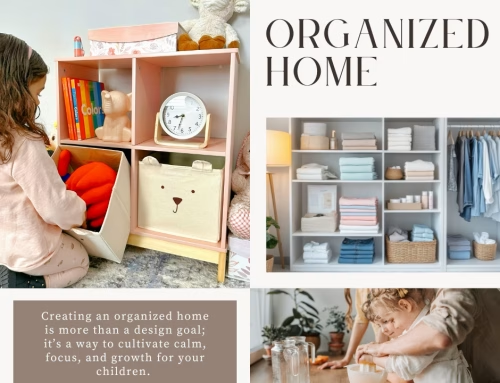Raised bed gardening is ideal for people who want a productive vegetable and herb garden regardless of its size. It allows them to plant anywhere, whether on their driveway, entryway, or front yard. Also, it utilizes small-space gardening techniques to maximize space and ensure plentiful harvests.
A Beginner’s Guide To Raised Bed Gardening
As you know, soil quality is extremely important in gardening, especially its impact on the overall quality of your harvest. Unfortunately, not all gardens have been given nutrient-rich and perfect soil blends. With this technique, you’ll be able to work with an ideal soil blend with the right selection of topsoils, even if the soil quality in your area is poor.
What Is Raised Bed Gardening?
Raised bed gardening refers to planting on an elevated soil bed above the ground with the help of a large planter called a raised bed. This type of planter is usually made from wood, concrete, and stone.
Once the soil bed has been made, it’s ready to be filled with soil. If your site has poor soil quality, you may use soil blends from other areas or create your own to produce an ideal and nutrient-dense soil mixture your plants will surely love.
How To Choose The Best Location For Raised Bed Gardening?
Gardening at the right location is crucial for growing plants and vegetables abundantly and beautifully. When choosing where to set up your raised beds, you may consider the following factors below:
- Sunlight: Sunlight is one of the most important things for plants to grow. Make sure the area is sunlit for at least six hours per day, a minimum for most vegetables and herbs. Nonetheless, it’d be best to consider eight to ten hours of exposure to sunlight.
- Water Source: Another important ingredient for growing plants and crops is water. Plants need watering from time to time. So, it’s important to establish an accessible irrigation system that’ll allow you to water your vegetables on a regular basis.
- Surrounding Plants: Are you planning to establish your raised beds under a tree? You might want to think about that again. Trees may absorb the oxygen your vegetables need to grow, causing their roots to die eventually.
What Should You Grow?
A gentle reminder: whatever grows on land can grow in a raised bed garden. So, plant and grow every vegetable you love, like brussels sprouts and spinach. However, your options might be limited due to your available space, especially for species that need more room to grow.
For root vegetables, like carrots, you may plant them closer to maximize space capacity. For vining vegetables, like cucumber, you may use metal support to aid their growth and prevent them from entangling with each other.
Furthermore, you may consider planting easy-to-grow vegetables, especially if you’re a novice gardener. These include zucchini, leafy greens, onions, garlic, snap peas, beets, okra, turnips, sweet potatoes, leeks, and radishes.
What Materials Are Perfect For Raised Bed Gardening?
Here are some materials you can use for your raised bed garden:
- Untreated Wood: When choosing untreated wood, select rot-resistant wood, such as cedar, redwood, and locust, but note that they’re expensive compared to pine and hemlock. However, these two may not last long.
- Modern Treated Wood: This wood is treated with chemicals that prevent further rotting. However, most gardeners aren’t comfortable using it because some chemicals may leach out of the wood, affecting the quality of their harvests.
- Concrete: This is a good option, but note that the pH of the soil may increase over time. Therefore, you might need to treat it with an acidifier to lower its pH if necessary.
- Stones/Rocks: These are the easiest ways to create a raised bed. Also, they’re extremely flexible, which allows you to adjust over time, depending on your needs.
How To Create A Balanced Soil Mix?
The most important ingredient in gardening is the soil. The more organic compounds it contains, the better. Here’s a composition of a balanced soil blend you may consider aiming for:
- 40% compost to provide plants with the right amount of nutrients, and you may use aged manure, but not the fresh one as much as possible
- 40% topsoil, not potting soil, which can be excessively loose and fluffy for raised beds
- 20% aeration for better drainage, and you may use lava rocks, pumice, rice hulls, or perlite
If you’re working with multiple large raised beds, you may consult a company to produce compost and soil mixes at a cheaper price. On the other hand, bagged soil mixes would suffice for smaller raised beds. You can also make your own compost.
Final Words
Raised bed gardening is an easy and effective way to grow plants and vegetables under controlled conditions. Unlike traditional gardening, it allows you to control the soil quality for bountiful and beautiful harvests.
Nevertheless, soil quality isn’t the only concern when building a raised bed garden. You should also take note of sunlight, water sources, and nearby trees. All of these may affect the growth of your plants and vegetables, so you’d better consider them.
After reading this guide, you’re ready to build your first-ever raised bed garden, and grow fresh, healthy, and delicious vegetables.
Happy gardening!
Other Posts You Might Enjoy:
Ways To Save Money During A Garden Remodeling
How To Decorate Your Home For Each Season





